This gear guide lists all the things I would bring if I had to climb Gran Paradiso and Mont Blanc again tomorrow with a hired guide. A hired guide will provide rope, first aid kit and other essentials. This is all the rest you would need.
Before you get started you can watch my YouTube video to get a quick overview of the gear list.
It’s important to know that you can rent most of the gear in Chamonix. You don’t have to invest in everything if this is your first big climb. One exception to that is boots! Buy your own, make sure they fit and break them in. You will thank me later.
I am not a guide or an expert, and you should always listen to the seasoned pros. But I will share my own experience with you and give you the tricks I have learned.
Essential gear
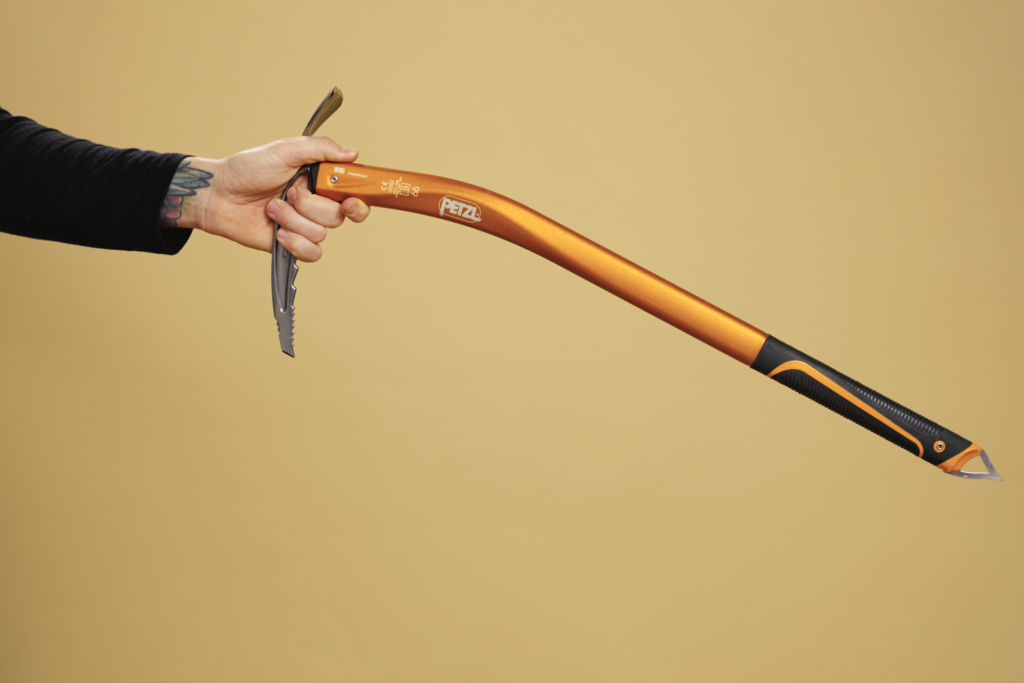
Helmet – Black Diamond Half Dome
You will need a helmet for crossing the Grand Couloir where there is a danger of rockfall. And it doesn’t hurt to wear it for protection for the rest of the climb. Always listen to your guide’s instructions. Besides, a helmet is a good place to mount your GoPro.
My helmet is a Black Diamond Half Dome in orange. It’s one of the cheaper basic helmets on the market, but it does the job. I have used this helmet on many trips the last few years including Lobuche East in Nepal. I will be looking to buy another model soon to shave off some weight and get the MIPS feature.
Crampons – Black Diamond Sabretooth Clip
You will of course need a good pair of crampons. Be aware of the different types so you don’t end up with a model made for ice climbing as the spikes are different and harder to walk with. You should also be aware what kind of crampons are supported by your boots. There are generally three categories; strap, semi-automatic and automatic.
If you have never used crampons before make sure you ask your guide how to fit them to your boots. They need to be secure and tight fitting. You don’t want one of them to fall off while crossing a crevasse (happened to me once).
I use the Black Diamond Sabretooth Clip crampons which are semi-automatic and I have no complaints.
Ice axe – Petzl Summit Evo
You need an ice axe for crossing the glaciers. It is used for support and as a method of self-arrest if you fall. Don’t confuse it with ice tools, which are used for ice climbing.
I purchased the Petzl Summit Evo specifically for the Mont Blanc climb. I wanted something better than my old one, which was simply too long and heavy. It’s an investment, as I will be climbing many more mountains in the coming years.
REI has an excellent guide on how to choose an axe (length, shape and so on) here https://www.rei.com/learn/expert-advice/ice-axe.html
Climbing harness – Petzl Altitude
You can easily get away with using a regular climbing harness, as did I. But with a lot of layers on it can get bulky, it weighs a lot more than mountaineering specific models and it takes up a lot of space in your pack.
I would go for the Petzl Altitude, which I used on my Rainier attempt a few years ago. It packs super small, is very light weight and has all the functionality you want for Mont Blanc.
1 x locking carabiner
Any locking carabiner of good quality will do. This is for tying into the rope if you are in the middle of it. I use one from Black Diamond.
2 x wiregate carabiners
It is optional to bring these, but I highly recommend it. They can be used for attaching your gloves to your harness, getting the rope out of the way if you are tied into the middle of it or many other useful things.
Trekking poles with snow baskets – Black Diamond Distance Carbon Z
You will use trekking poles for approach hikes and even on the glacier when appropriate. Sometimes with a trekking pole in one hand and your ice axe in the other. They are good for a lot of things, not limited to
- Saving energy
- Helping you keep your balance and avoiding falls
- Lessening the impact on your knees
- Moving faster over difficult terrain
I use the Black Diamond Distance Carbon Z Trekking Poles. I love them because they are very light and can be folded when you need to store them in the pack. The build quality is great. They have served me for a few years now and I can’t complain about anything.
Get snow baskets to go with your trekking poles. They will help prevent breaking through snow as easily.
Headlamp – Black Diamond Storm 400
A good headlamp is essential for the early morning summit push. There are many different brands and models which are suited for the job. I would recommend something that can output 300 lumens or more. And it absolutely needs to have replaceable batteries. You can’t recharge a built-in battery while you are climbing.
I went with the Black Diamond Storm 400 and liked it a lot. It also has good reviews from several places. But there are cheaper options available.
Extra batteries for headlamp – AAA
Keep a set of fresh batteries for your headlamp. Mine uses AAA.
Sunglasses – Julbo Explorer 2.0 with REACTIV 2-4 lenses
You need proper mountaineering sunglasses that will protect you from getting snowblind. They need to block off the light coming from the sides when you are on snow and ice.
My sunglasses are the Julbo Explorer 2.0 with the Reactiv 2-4 lenses. They get darker or lighter to match changing light conditions. I really like that feature.
Ski goggles
If the conditions turn really bad and you get a lot of wind and snow flying around you need a pair of ski goggles. Mine are just a pair of old ones, I am sure you can find something better.
Hydration system
We were advised to bring 2 L of water. Our guide brought 1.5 L and I saw people bringing 3 L and a thermos. Less weight means more speed.
I had two 1 L Nalgene water bottles. I also had an insulation sleeve for one of the bottles to keep it from freezing. I drank the water from the other bottle first and saved the insulated one for summit and descent.
Duct tape
Wrap a piece of duct tape around one of your Nalgenes so you always have it with you. It might come in handy for repairing a hole in your down jacket, mend broken sunglasses or something else.
Sleeping bag liner- Sea to Summit Thermolite Reactor
The huts provide pillows and blankets with the beds but you will need to bring a sleeping bag liner yourself. Just get a light one that isn’t too bulky, it’s not for warmth but for comfort and hygiene.
I use a Sea to Summit Thermolite Reactor that I bought 9 years ago for backpacking and it is still going strong.
Personal gear
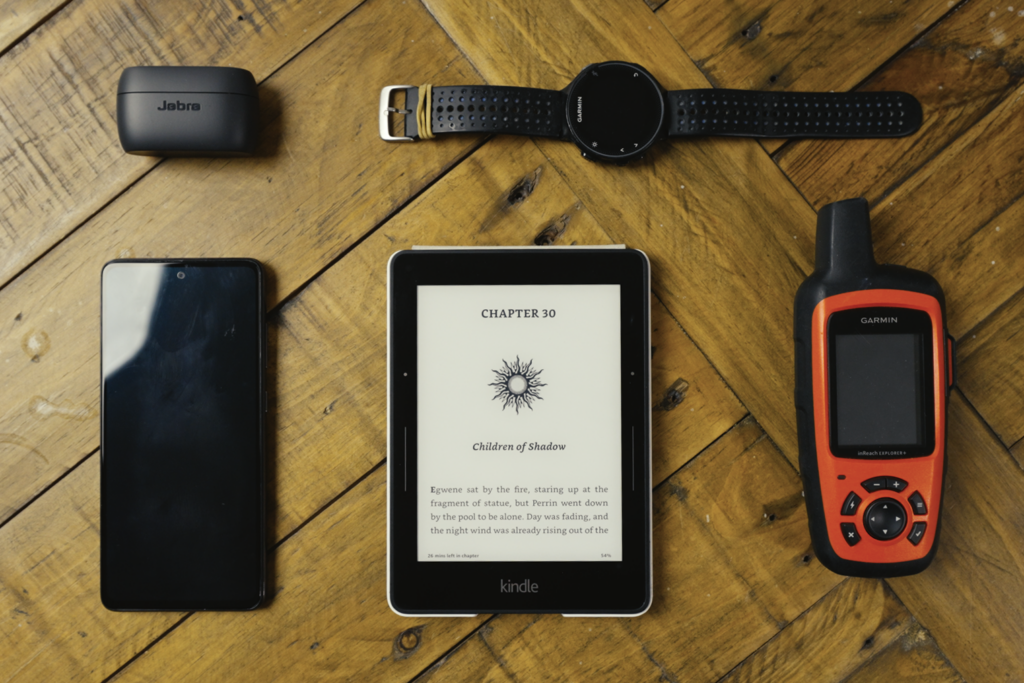
The personal gear listed here are more optional. You could probably do without any of these items. Except the cash that you absolutely need for buying water.
Phone
You won’t have service all the time, but you can use it for music and podcasts. And if you don’t bring a camera you should use your phone to capture your experience.
Satellite SOS device – Garmin Inreach Explorer
This is absolutely a nice to have and not a need to have. I brought one. It once saved me and my friend when I busted my knee in Sarek 3 days from the nearest road. We were able to get evacuated by helicopter later the same day.
I use it for leaving breadcrumbs and sending status updates throughout my trips. Makes the people at home sleep better and makes me feel more safe too.
That said, the Alps are known for fast and reliable mountain rescue when weather permits. Remember to get mountain rescue insurance before you climb!
Watch – Garmin forerunner 235
I like to keep track of time and it’s easier to look at a watch than to get your phone out. I used the watch for training prior to the trip and to track steps and heart rate on the mountain as well.
Earbuds – Jabra Elite Active 75t
I guess a pair of wired earbuds would be lighter, but I liked that I could use the noise reduction feature to drown out the noise at the huts.
Kindle or other brand of E-reader
I didn’t bring one, but I would consider it if I had to go again. Our summit attempt was postponed because of bad weather and we had a very long day in the gouter hut. I would just leave it at the hut with the other stuff we didn’t need for the summit push and pick it up going back down.
100 euro in cash
Bring cash for the huts! Water costs 7-10 euros for 1.5 L if I remember correctly and you will need to buy a few of those on the way up. You can buy extra meals and snacks, which is really nice for keeping up your mood and energy. Maybe consider buying your guide an extra meal too, they would appreciate that.
Snacks
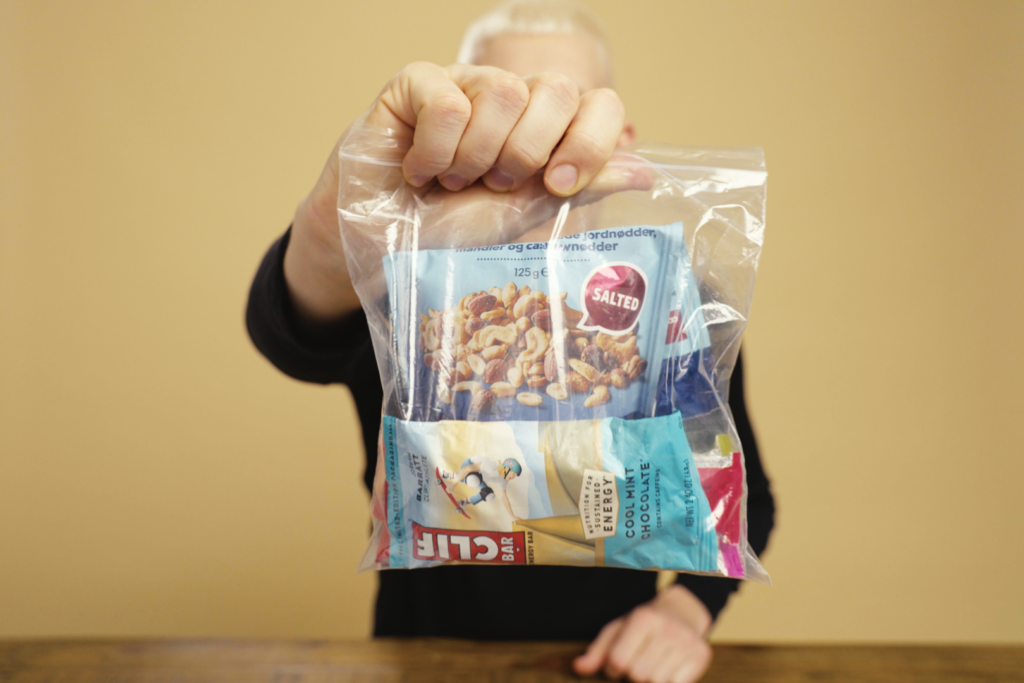
Snacks are important for refueling on the go and in the huts. And your guide will be happy if you share it with them. Don’t go overboard and bring loads, but bring a few extras.
A side-effect of high altitude is that you feel less hungry and certain textures and flavors might be harder to eat. Being slightly dehydrated also makes it harder to eat. I like Clif bars for trekking, but I absolutely can’t stomach them when I’m working really hard and feeling fatigued higher on the mountains.
Here are three different snacks I would bring.
Clif BLOKS Energy Chew
The Clif bloks are my new favorite snack. They are like gummy bears, taste really good and they don’t upset my stomach at any time. Try them out! It’s a lot better than nasty sticky gels. Citrus and Cran-Razz are my favorites.
Clif Bars
I love them when I am not in the situation described above. I find them very filling and the flavor options are great. I like Cool Mint Chocolate and White Chocolate Macadamia the best.
Nuts
For snacking in the huts I would bring some cashews, honey roasted almonds etc. I don’t like traditional trail mix with raisins and so on.
Clothes
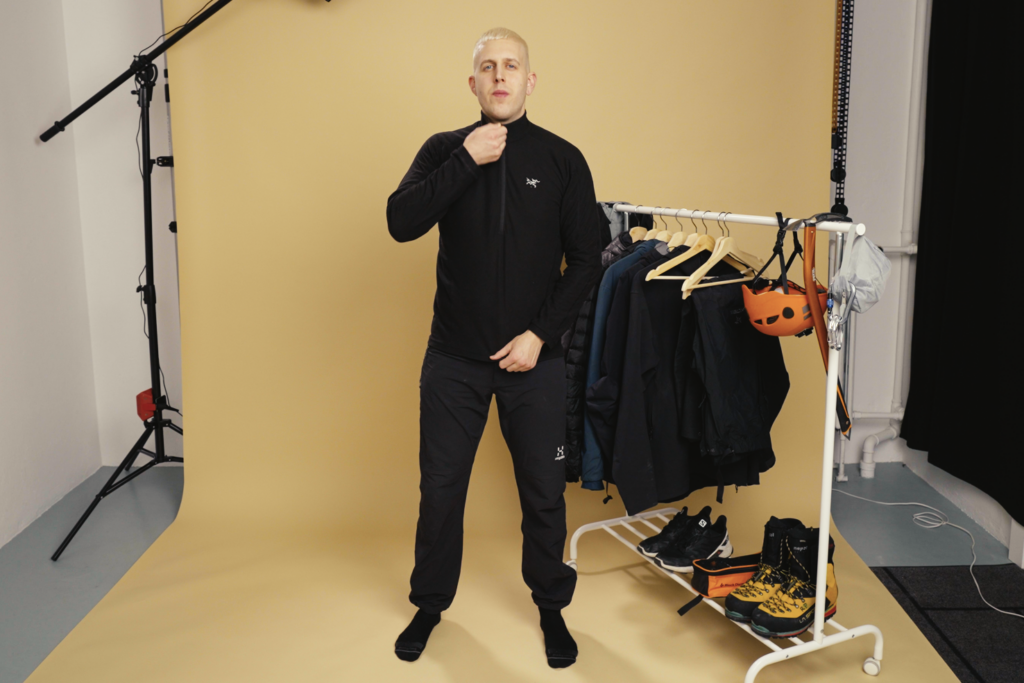
As you know, clothing for the outdoors is all about building a system of layers that can work together or independently. I use wool for my base layers because I like their moisture wicking capabilities combined with the anti-smelling feature of wool. But I also know people who will only use synthetics. Make your own choices based on experience!
I have collected the items in my wardrobe over almost a decade now, and you don’t need everything from Arc’Teryx. There are plenty of good quality and cheaper brands out there. Keep that in mind when reading on.
BASE LAYERS
Base layers are for keeping your body dry by transporting sweat away from the skin. They should be comfortable to wear, and merino wool is perfect for me.
Underpants – Icebreaker Anatomica Boxers
A pair of underpants in wool is the first part of my base layer.
Leggings – Icebreaker Mens 200 Oasis Leggings
Wool leggins go on top of my underpants as a part of my base layer for extra warmth when needed. For approach hikes I don’t wear these, as it gets too hot.
Long sleeve wool shirt – Icebreaker Mens 200 Oasis L/S Crewe
This is the top for my base layer. I like the extra warmth provided by long sleeves. And I think it has more uses on its own than a t-shirt.
MID LAYERS
Midlayers are for insulation against the cold. It’s important to have different options for the midlayer as you might encounter wildly different temperatures. The fleece can be combined with either of the jackets for extra warmth.
Thin fleece – similar to Arc’teryx Delta LT Zip Neck Men’s
I think a thin fleece is great to have. It can be a light reinforcement layer that keeps you cooler than a lot of the heavier midlayers. And you don’t want to sweat on the mountain, because that means you will get cold really fast when you stop moving.
I don’t remember the exact name of mine, but it is probably similar to the Arc’teryx Delta LT Zip Neck Men’s.
Primaloft jacket – Arc’teryx Proton LT Hoody
This is a midlayer of medium warmth that can replace the fleece for colder temperatures. I use the Proton LT Hoody from Arc’teryx and I am simply in love with that jacket. I also use it as a standalone layer on hikes and for everyday use.
Down jacket – Arc’teryx Cerium LT Hoody
A warm down jacket is the ultimate midlayer for really cold weather. You can also use it for extra warmth when having a break or when you reach the summit.
My Cerium LT Hoody is from 2013 and it is still holding up great. I would definitely recommend it as a wise investment for years to come.
TOP LAYERS
Top layers are for protection against the elements like rain and wind.
Softshell jacket – Arc’teryx Mens Gamma LT Hoody
I use a softshell jacket because of its breathability. I get hot when climbing and with this jacket I have a chance of staying dry and not being totally sweaty.
It’s also great underneath a hardshell jacket acting as a cool midlayer when I don’t want to get too hot. Sometimes I wear just the baselayer woolen long sleeved shirt, the softshell jacket and the hardshell jacket on top.
Hardshell jacket – Arc’teryx Mens Alpha AR Jacket
You absolutely need a hardshell jacket for protection against the weather. There are many options out there which are cheaper than my jacket.
I use the Alpha AR Jacket from Arc’teryx for climbs, hikes and everyday commuting. And it doesn’t hurt that all the city boys started wearing Arc so now I look like I care about my clothes.
Softshell pants – Haglöfs Morän Pant
Haglöfs make really good pants and the fit is perfect for me. My weight training has given me quite a large butt that doesn’t fit comfortably in most pants made for men. But Haglöfs have nailed it. This model has a fantastic fit, full range of motion and are very durable, the only things I need from my softshell pants while on the mountain.
Hardshell pants – Arc’teryx Mens Beta AR pant
A pair of hardshell pants are only needed for very bad weather but you don’t want to be on the mountain without them. I didn’t use mine on my September 2021 climb at all because of the perfect weather conditions. But usually you would wear them over the baselayer and skip the softshell pants.
MISC CLOTHES AND FOOTWEAR
2 x Thin wool socks – Smartwool Hike Liner Crew
These are great for wearing with the trail runners.
2 x Medium wool socks – Darn Tough Men’s Hiker Micro Crew Sock Cushion
These are great for extra warmth. I use a system of a thin and a thick sock in my mountaineering boots. The Darn Tough socks are great as Mont Blanc doesn’t get too cold compared to summits at higher altitudes.
Trail runners – Salomon Supercross 3
Consider bringing trail runners for some of the approach hikes. It saved my trip as I had massive problems with blisters. With the trail runners I was able to give my heels a break from the mountaineering boots so they could heal before the summit push from the Gouter Hut.
I used a pair of Salomon Supercross 3, but there are so many options. Make sure you try them on in a store.
Mountaineering boots – La Sportiva Nepal Evo
You need a good pair of mountaineering boots. A single boot is fine for Mont Blanc. You absolutely need to buy your boots in a good store that offers quality advice. You need to try different boots on with the socks you will be using to find the right size. Different brands have different fitting and it needs to be compatible with your feet.
After you buy them you should break them in to avoid blisters on your climb. And if you are flying in to climb Mont Blanc make sure you wear your boots on the plane so you don’t lose them in transit.
Gaiters – Outdoor Research Men’s Crocodile Gaiters
Gaiter are great for keeping snow out and keeping pants and boots tidy so you don’t catch your crampons. Try them on in the store with your boots.
Softshell gloves – Mountain Equipment G2 Alpine Glove
You need a light pair of gloves for good weather. I don’t care much for wool liner gloves as they slide around too much. I bought these right before the trip and they were fantastic. A great pair of gloves that kept me warm and agile for 90% of the climb.
Warm gloves – Black Diamond Soloist Gloves
You need a pair of warmer gloves for bad weather.
The Black Diamond Soloist Gloves worked really well for me. They consist of a warm inner glove and a Gore-Tex outer shell which can be taken apart. I didn’t use the inner glove, but frequently wore the outer shell on top of my softshell gloves for extra warmth.
Warm hat – Rab Shadow Beanie
A warm hat worn underneath the helmet keeps you warm.
Belt – Arc’teryx Conveyor Belt
This belt is great because it doesn’t slip and doesn’t add much bulk. I could comfortably wear it underneath several layers and the harness.
Cap – The North Face black cap
A cap is great for the approach hikes which can be hot and sunny.
Buff – The original Buff
A buff is everyone’s best friend for keeping your neck warm and protecting you against wind and sun.
Toiletries
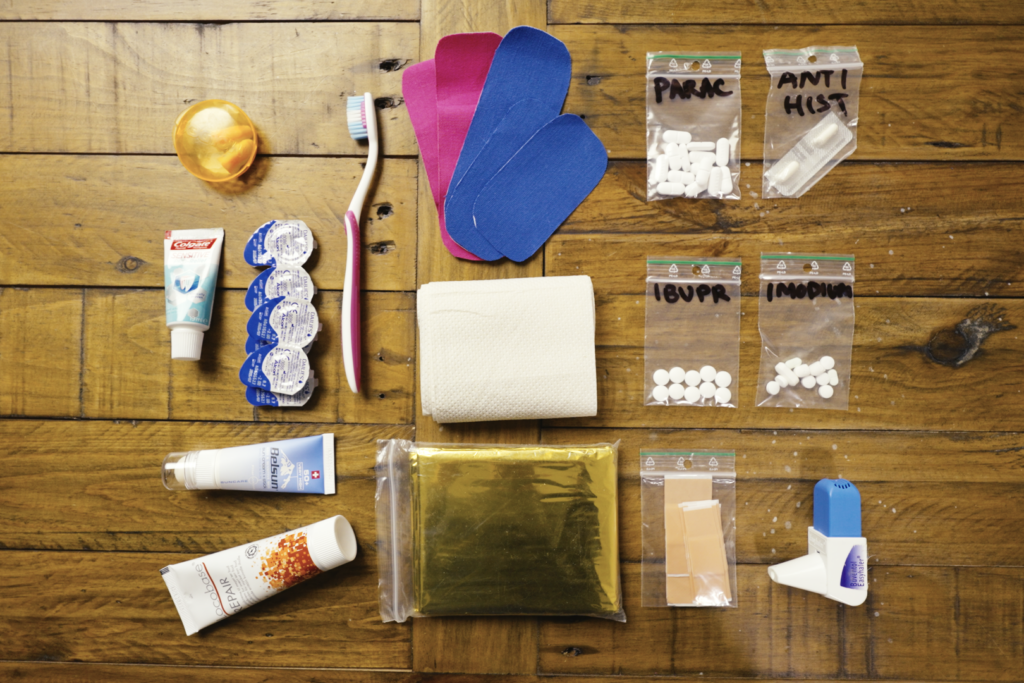
Zip lock bags (small and large)
I use small ones for pills and bigger ones to hold all my toiletries. Minimal weight and bulk plus you can see the items you are looking for.
Toothbrush + toothpaste
Get a small travel sized toothpaste, you won’t need that much. Go ahead and cut that toothbrush handle in half if you feel like it. I won’t judge!
Earplugs
Sleeping in the huts is hard enough with the altitude and adrenaline. Don’t let your neighbors’ loud snoring ruin it even more.
Ibuprofen + Paracetamol
It’s good to bring simple painkillers. Paracetamol is good for the slight headache that altitude might give you. And Ibuprofen if you need extra effect, have a tooth that suddenly starts to act up or similar.
If you are a healthy person without the need for any other medication you should keep it to a minimum. Adverse effects might ruin your trip or cloud your judgment on the climb.
Imodium
I bring Imodium just in case I need it. I always take them before the summit day. My stomach gets very nervous from the adrenaline and I do not want to have an accident or have to stop on the climb to take care of business. Just an innocent party trick that you might find useful.
Prescription medication
I’m an asthmatic and so I took my medicine on the climb. I also brought a spare inhaler, just in case the first one failed.
Bring your prescription medication if you need it.
Contacts
I am near-sighted and use glasses and contacts. For the climb I left my glasses and only brought contacts. It works really well even despite the cold and I didn’t have a single problem.
Skin lotion – Locobase Repair
My skin gets very dry from the cold and wind so I bring a small tube of lotion. It’s better than having to deal with cracked skin.
Toilet paper
You never know when you’ll need it. I keep my toilet paper dry and compressed in a zip lock bag. Decide how much you will need and don’t bring the paperboard core.
Trash bags
I use two bigger zip lock bags inside each other to carry trash. You should be able to carry used toilet paper without spoiling the rest of your gear.
Kinesiotape (for taping feet)
I use kinesiology tape for taping up my feet to prevent blisters. The tape is flexible and adheres well to skin. Make sure to change it every day to avoid problems.
Sunscreen and SPF lip balm
Don’t get burned! SPF30 should be fine.
Emergency blanket
I like to keep one of these in my pack for emergencies. Weight conscious climbers would probably disagree.
Band-aids
I brought a few band-aids on the climb to keep cuts clean and stop bleeding.
Backpack
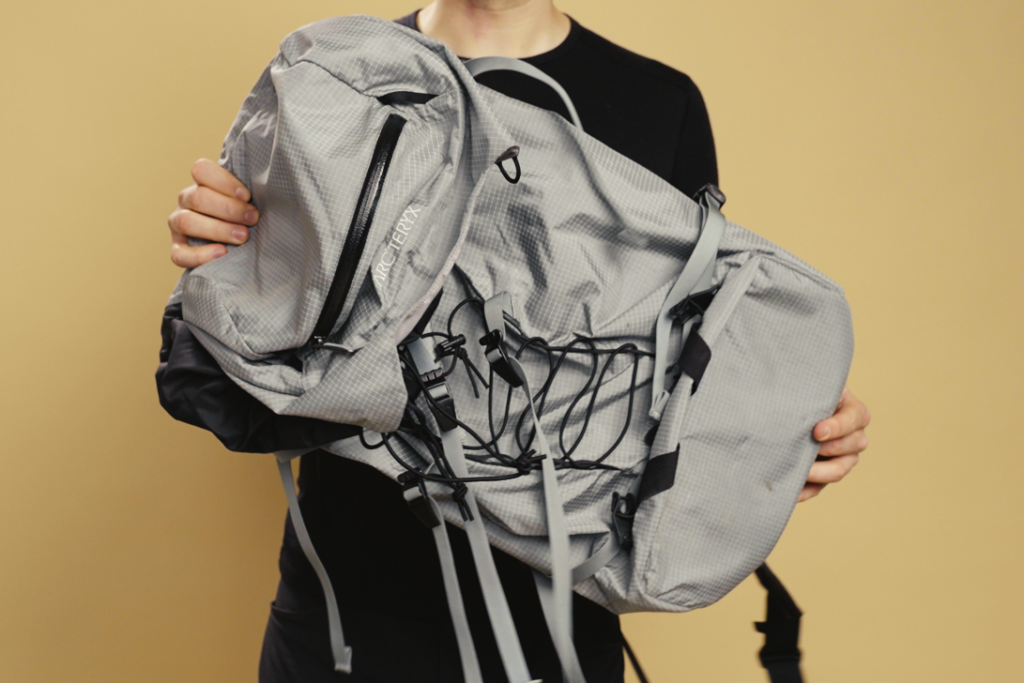
Alpine backpack – Arc’teryx Alpha AR 35 Backpack
You will need an alpine backpack that is light and has the right amount of features for the purpose. You need loops for the ice axe and a smaller volume to prevent you from bringing unnecessary gear.
I opted for the Arc’teryx Alpha AR 35 Backpack. I like it because it still has a top lid and Internal organization which is nice to keep track of my gear. The hip belt is just right without too much bulk and it can easily fold to the front for storing it when not needed.
Notes
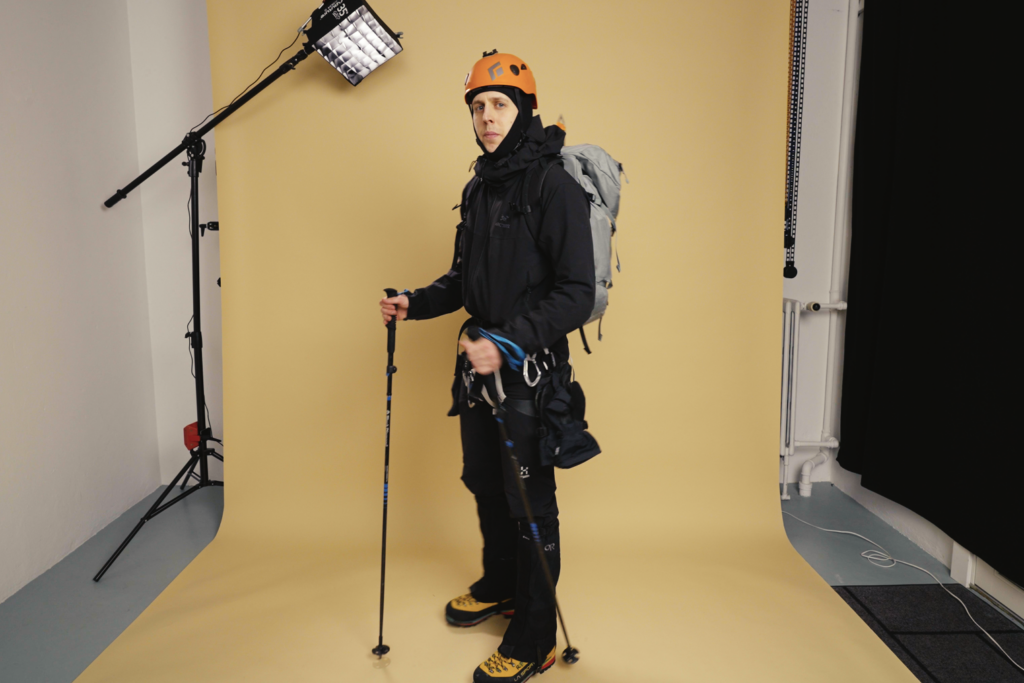
I left my trail runners at the first hut as it didn’t need them for the rest of the climb. You can probably get away with this too. At the Gouter hut I also left some other stuff that I didn’t need for the summit like my toothbrush and various other small items. Shave off as much weight as you can and pick it up on the way down. There is no reason to make it harder for yourself.
There was plenty of hand sanitizer at the huts when I went. So I wouldn’t care to bring some myself.
I haven’t described my camera gear. If enough people request it I will make a video about it.
I hope you can use the information provided in this list. Thanks for reading.
